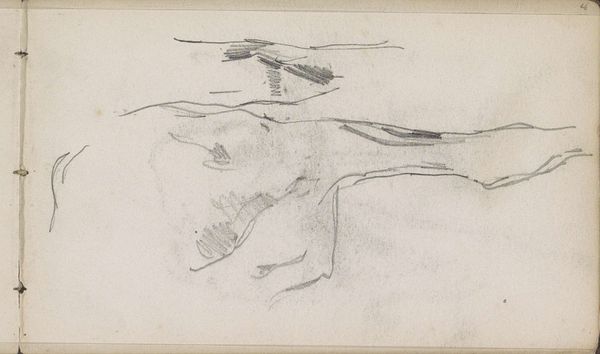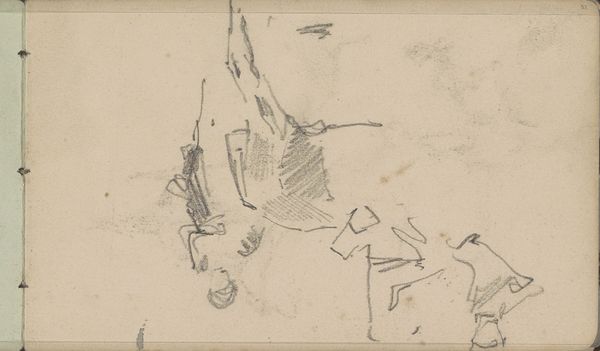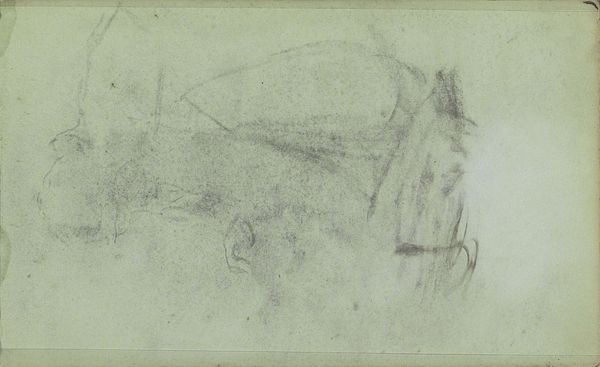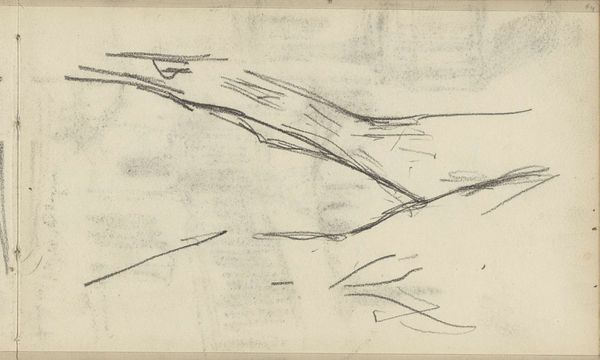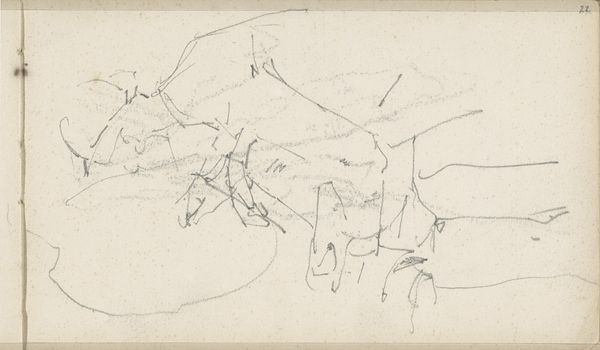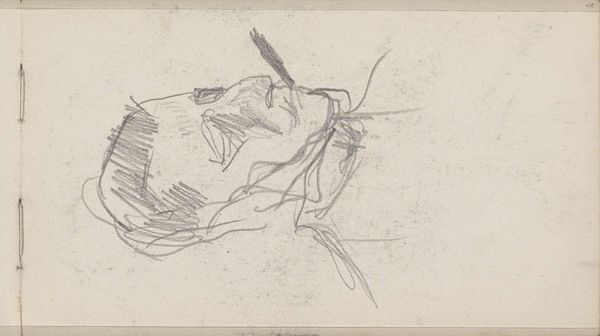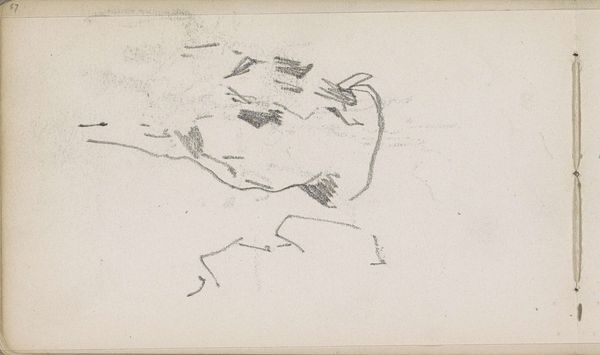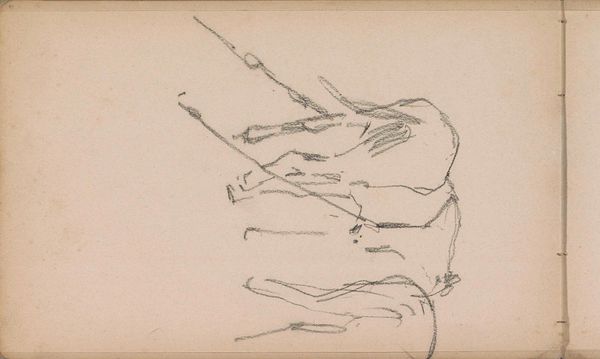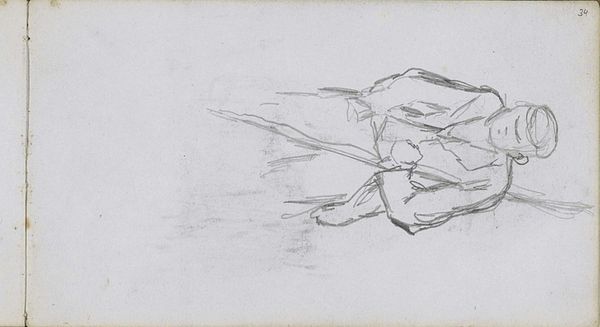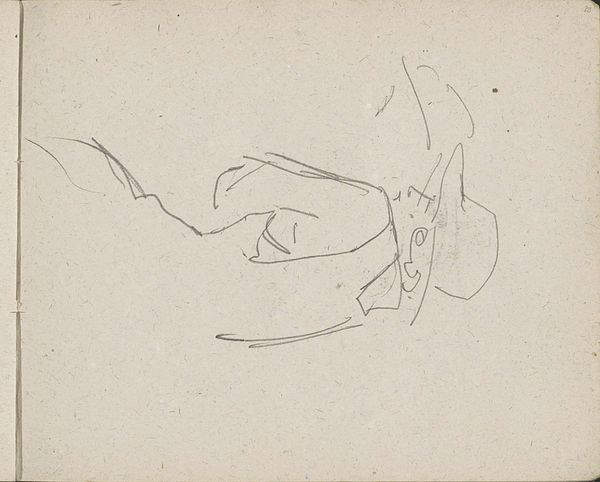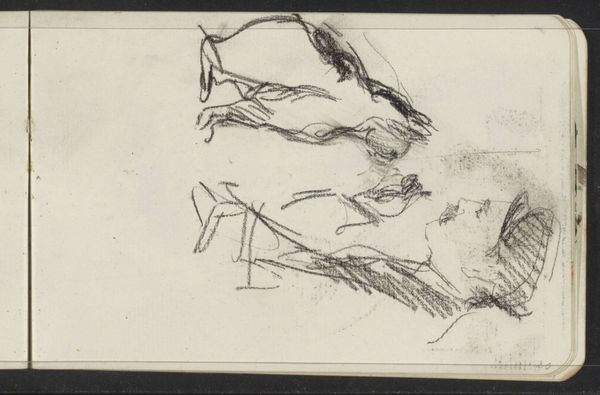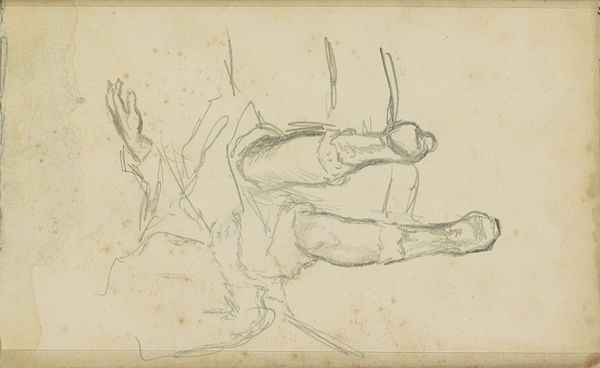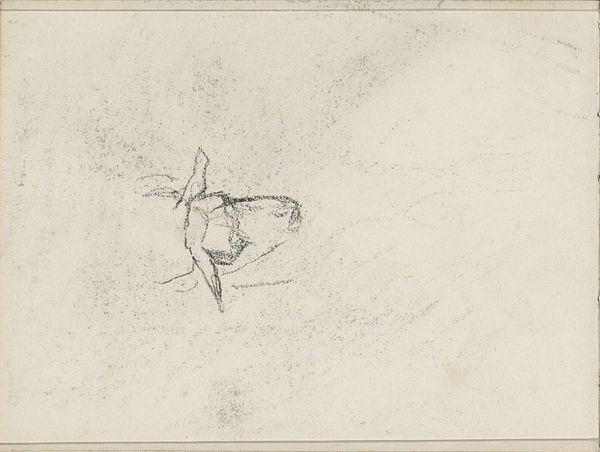
drawing, pencil, graphite
#
portrait
#
drawing
#
animal
#
pencil sketch
#
pencil
#
horse
#
graphite
Copyright: Rijks Museum: Open Domain
Editor: This is "Head of a Horse," a pencil drawing by Carel Adolph Lion Cachet, dating from around 1895 to 1900. It's at the Rijksmuseum. I'm struck by how simple it is, almost ephemeral. What stands out to you about it? Curator: It's compelling because it lays bare the mechanics of image creation. Notice the graphite itself – the visible strokes, the smudging, the paper texture. It shouts “process” over “product.” This was not about idealized representation, but a working through the subject, perhaps studying equine anatomy. Think about Cachet's access to materials; pencils were becoming increasingly available, changing artistic possibilities for sketching and preliminary studies. How might broader societal shifts towards industrialization impacted Cachet's practice? Editor: That makes sense. The sketch-like quality deemphasizes the "art object" in favor of... well, the act of sketching. So, this would make "Head of a Horse" more about labor and production, than... pure skill, or the essence of a horse. Curator: Exactly. Consider the role of drawing at this time. Was it considered 'lesser' than painting? And who was it for? If Cachet saw artistic merit in this stage, despite it being deemed preliminary, we can see his subversion of social structures related to artistic creation. Also, if we considered how images of animals were used at the time, especially of labor animals such as horses, what connections to social changes do you notice here? Editor: Fascinating. I had thought of it as a simple study, but thinking about it in terms of the labor of art and the materials themselves shifts the entire understanding of it. Curator: It asks us to reconsider value. What makes a piece worthy of our attention – the finished product or the record of its making? This is key in the materialist approach. Editor: Thanks; thinking about the process and materials really brings a new depth to what I initially saw as a quick sketch. Curator: Likewise, understanding your response is really helping my own research too. Thanks.
Comments
No comments
Be the first to comment and join the conversation on the ultimate creative platform.
